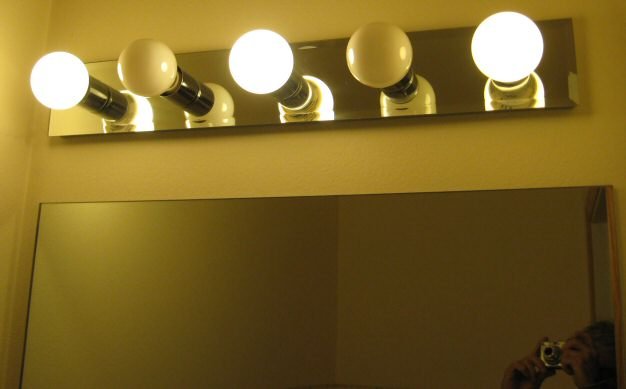W/ regard to 130V bulbs, we used them in a number of applications but no longer do. They create much more heat - ...
Calmoki: I'm surprised the 130V bulbs would cause excess heating of the fixture compared to 120V bulbs. Any theories on this?
I'm guessing, and will gladly defer to a lighting engineer. But. Wiki says this: // surface area stuff// Pure guess on my part though, and going against at least part of Wiki's undoubted veracity.
I am not an engineer, nor do i play one - happy when lights go on when a switch is thrown.
Wiki worded the surface area thing very poorly. But after some more doodling (ala the tire rotation thing

), a lower voltage bulb will have less surface area
relative to it's size, so I think more of the heat stays trapped inside the filament.
A lower voltage bulb of equal watt consumption
will need to have a shorter and/or thicker filament (assuming all other things equal, same filament material, etc). Lower Voltage, same Watts means lower Resistance, so R must come down, therefore thicker and/or shorter filament. So, let's assume same length filament, and some easy numbers:
100V, 100 W bulb: Requires 1 Amp, and a 100 Ohm filament.
50V, 100 W bulb: Requires 2 Amp, and a 25 Ohm filament.
A 25 Ohm filament is 1/4th the R of a 100 Ohm, so it requires 4x the cross sectional area (keeping the length and material the same). Increasing the Cross-sectional Area by a factor of 4 only increases the circumference ( or radius or diameter, and therefore the surface area) by a factor of 2.
So the low voltage bulb does have more total surface area, but a lower surface to volume ratio. The only part that can give off light is the surface, so I think what happens id the heat generated inside the center of the filament is just trapped.
Or, if the filament was 4X shorter, it would have less surface area (hey that was easier, too bad I thought of it second!)
A secondary effect is that generally, low voltage bulbs have shorter filaments ( or a combination of shorter & thicker), so more of the filament is close to the stand-offs. The standoffs absorb heat away from the filament, so that part does not incandesce. Also, the thicker filament will conduct more heat to the standoffs, also lowering the ability of the filament to incandesce. So when a high voltage bulb is run at its design voltage, it can be more efficient than a low voltage bulb run at its design voltage.
Bring on the LEDS!
Wait a minute - what was the question?

.... Oh yeah, a 130V bulb running on 115V,
producing the same lumens as 115V bulb on 115V will be less efficient and therefore hotter. Once you lower the voltage from the design voltage, the efficiency is going to drop. So, he was probably replacing 40W 115V bulbs with 60W, 75W or 100 W 130 V, or something along those lines. So, more heat generated.
-ERD50


